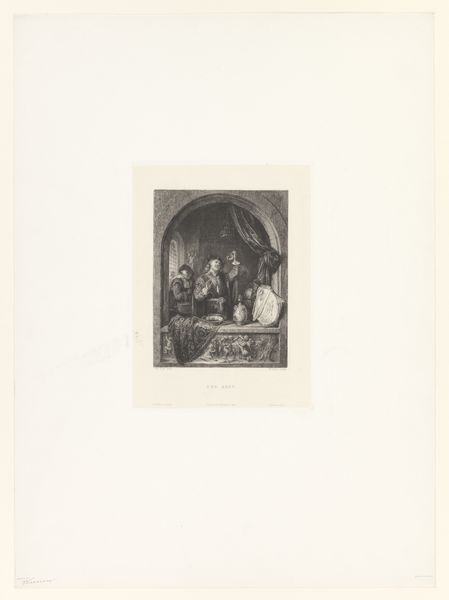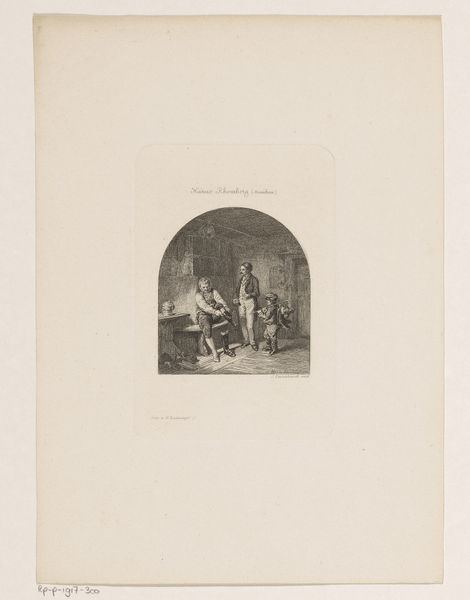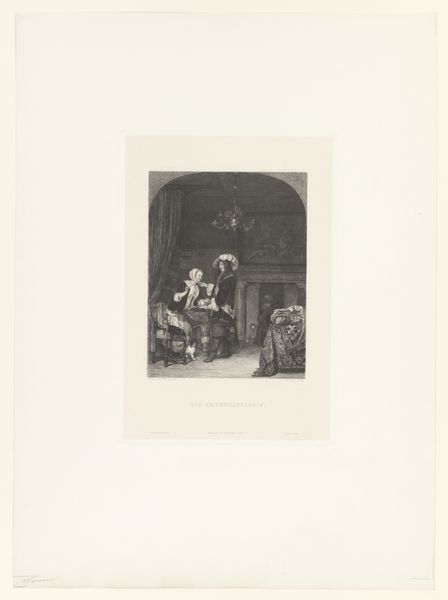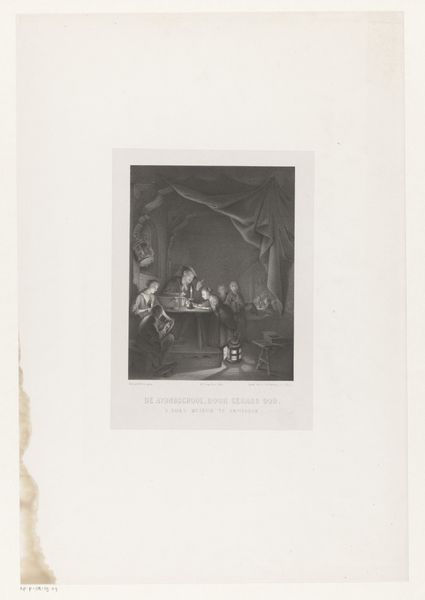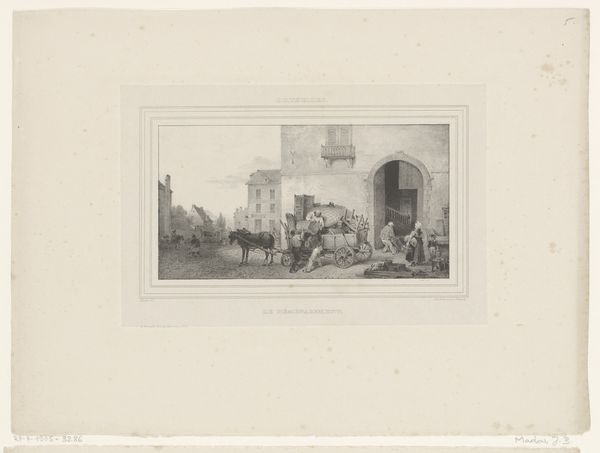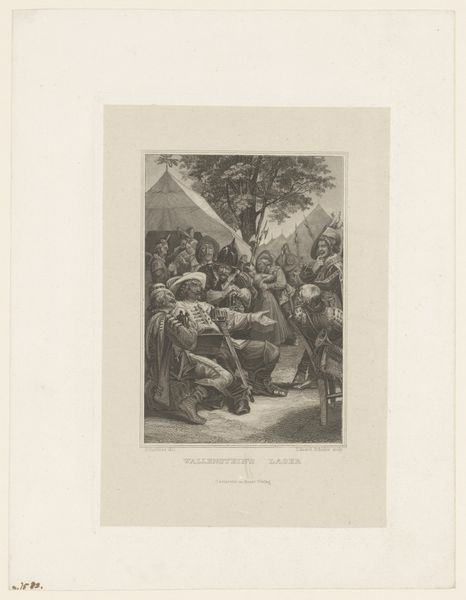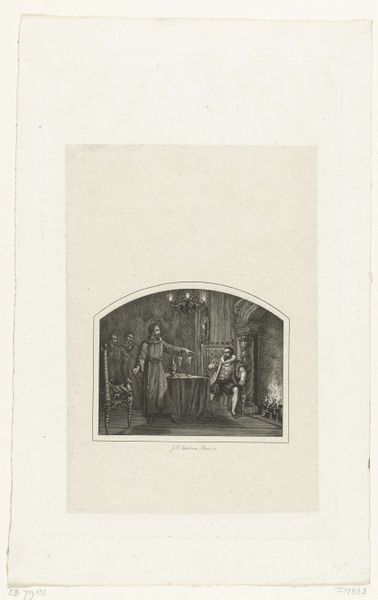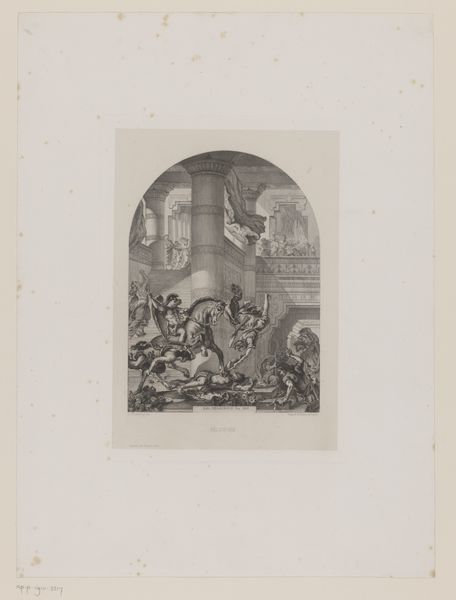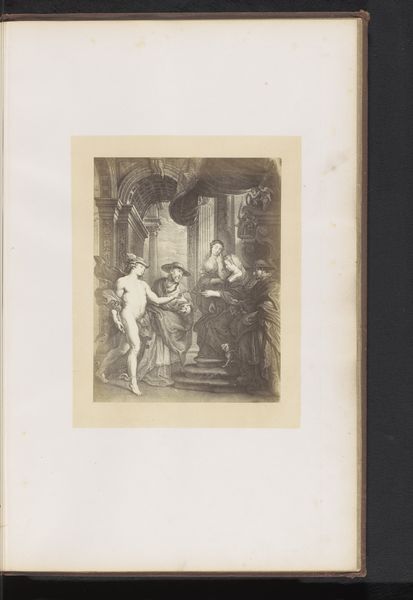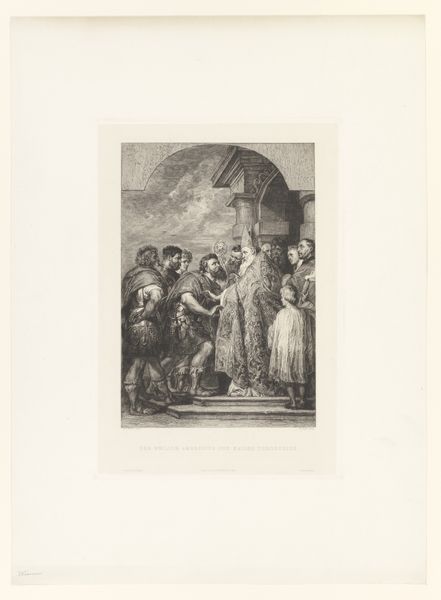
print, engraving
# print
#
figuration
#
history-painting
#
northern-renaissance
#
engraving
Dimensions: height 389 mm, width 287 mm
Copyright: Rijks Museum: Open Domain
Editor: We're looking at Johann Leonhard Raab's "Vision of Saint Bernard," an engraving dating between 1835 and 1899. It feels very staged, almost like a theatrical production, with the figures arranged in a clear foreground against an architectural backdrop. What formal elements strike you in this composition? Curator: Note how the architectural frame directs our gaze, not towards spatial depth, but to the figures at center. This restricted depth emphasizes their physical presence and formal arrangement, highlighting a compositional balance. Editor: Can you expand on that balance? Curator: Observe the Virgin Mary positioned symmetrically opposite St. Bernard. The balanced placement anchors the composition. The subtle contrast between the light falling on Mary versus the shaded figure of Bernard draws our focus to the interaction between them. The architectural elements support this visual choreography. Editor: The limited tonal range makes the scene feel contained, doesn’t it? Are there specific forms that carry meaning for you? Curator: The arches rhythmically compartmentalize the scene, contributing to a sense of order. Notice, also, how each figure is draped in simple yet expressive attire, creating contrasting shapes within the composition. What relationship between line and form do you find most engaging? Editor: I see now how the linear quality of the engraving and the solid shapes of the figures work together to focus the eye on certain key moments, especially the offering of the book to Saint Bernard. That's an element I didn't see before. Thanks for pointing that out. Curator: The careful arrangement certainly enhances the symbolic exchange depicted within the narrative, underlining the structure in service to meaning.
Comments
No comments
Be the first to comment and join the conversation on the ultimate creative platform.
